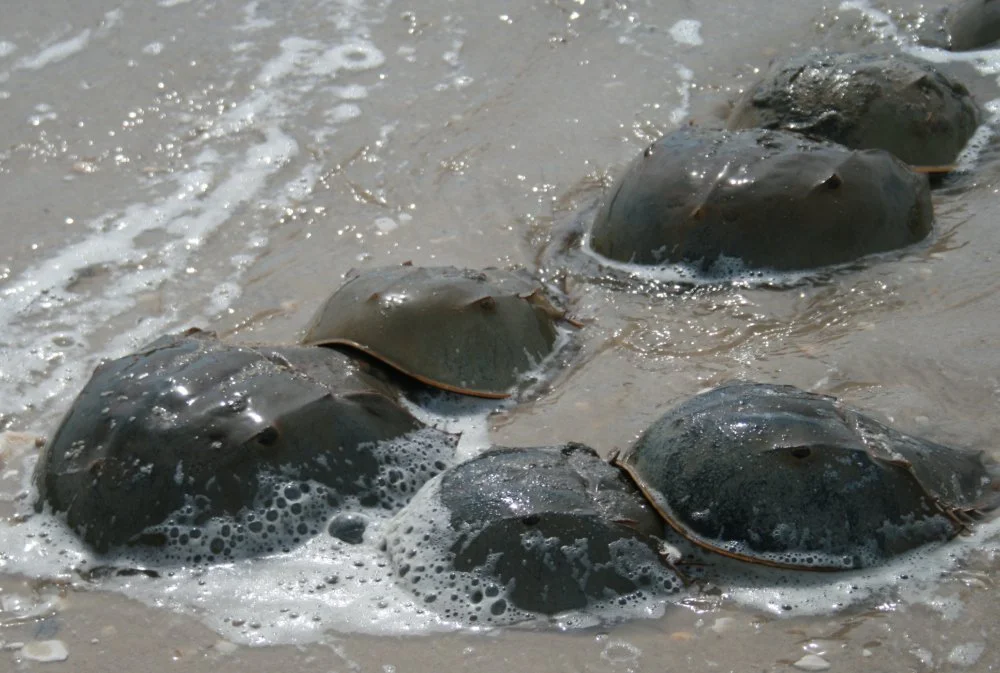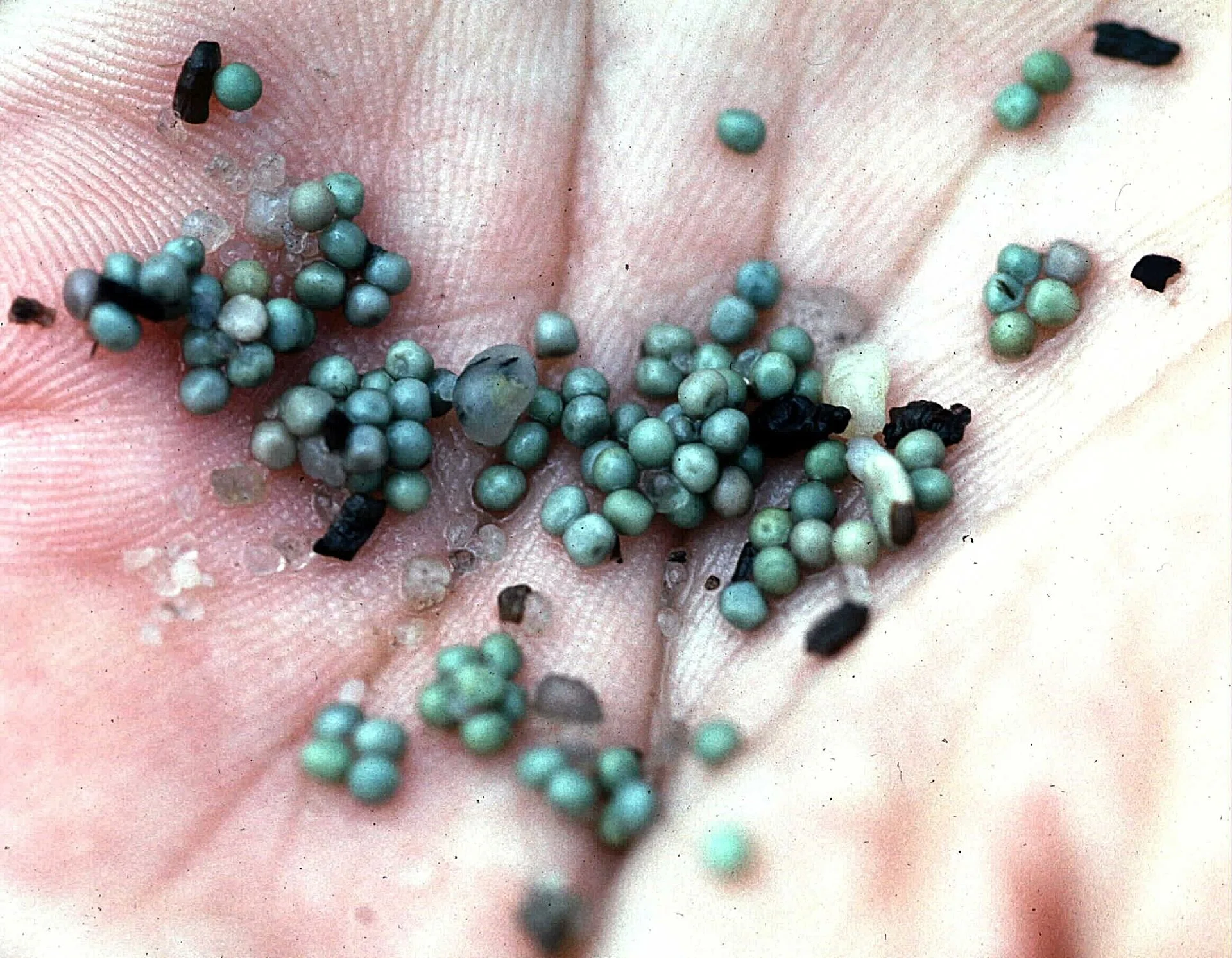Blue gold
Horseshoe crabs mating. Horseshoe crabs live primarily in and around shallow coastal waters on sandy or muddy bottoms. They tend to spawn in the intertidal zone at spring high tides.
Adapted from Robert Whitcomb’s “Digital Diary,’’ in GoLocal24.com
When I was a small boy living along Massachusetts Bay, we used to pick up and fling those brown, helmet-shaped and scary-looking, but harmless, arthropods on the lower beach called horseshoe crabs into the water and sometimes even at each other. Little did we know that this species, which goes back almost half a billion years, would become an important bio-medical resource, so much so that, along with habitat destruction, including ocean acidification caused by man-made global warming from burning fossil fuel, the species is endangered in many places.
Horseshoe crabs, by the way, are not crabs. Rather, they’re related to spiders and other arachnids.
For some years, drug companies have been harvesting the bluish blood of the creatures in New England and other places on the East Coast for a protein that’s used to identify dangerous bacteria during new-drug testing, including vaccines.
So important is horseshoe-crab blood that its value is estimated to be $15,000 a quart.
While pharm companies assert that most horseshoe crabs survive after they’re milked and then returned to the water, many die as a result, and over-harvesting is a distinct threat to the future of the species. Of course, everything in nature is connected and wiping out horseshoe crabs will imperil other species.
Consider that they play an important role in the food web for migrating shorebirds, finfish and Atlantic loggerhead turtles.
So let’s hope that environmental regulators pay close attention to the horseshoe-crab population.
They remind us that, with ever-developing scientific knowledge, some previously mostly ignored species turn out to be very important to people and to the wider web of life that humans depend on – a web that people are destroying at an accelerating rate. The more species we can save, the better for us.
Even horseshoe crabs’ eggs are bluish.

